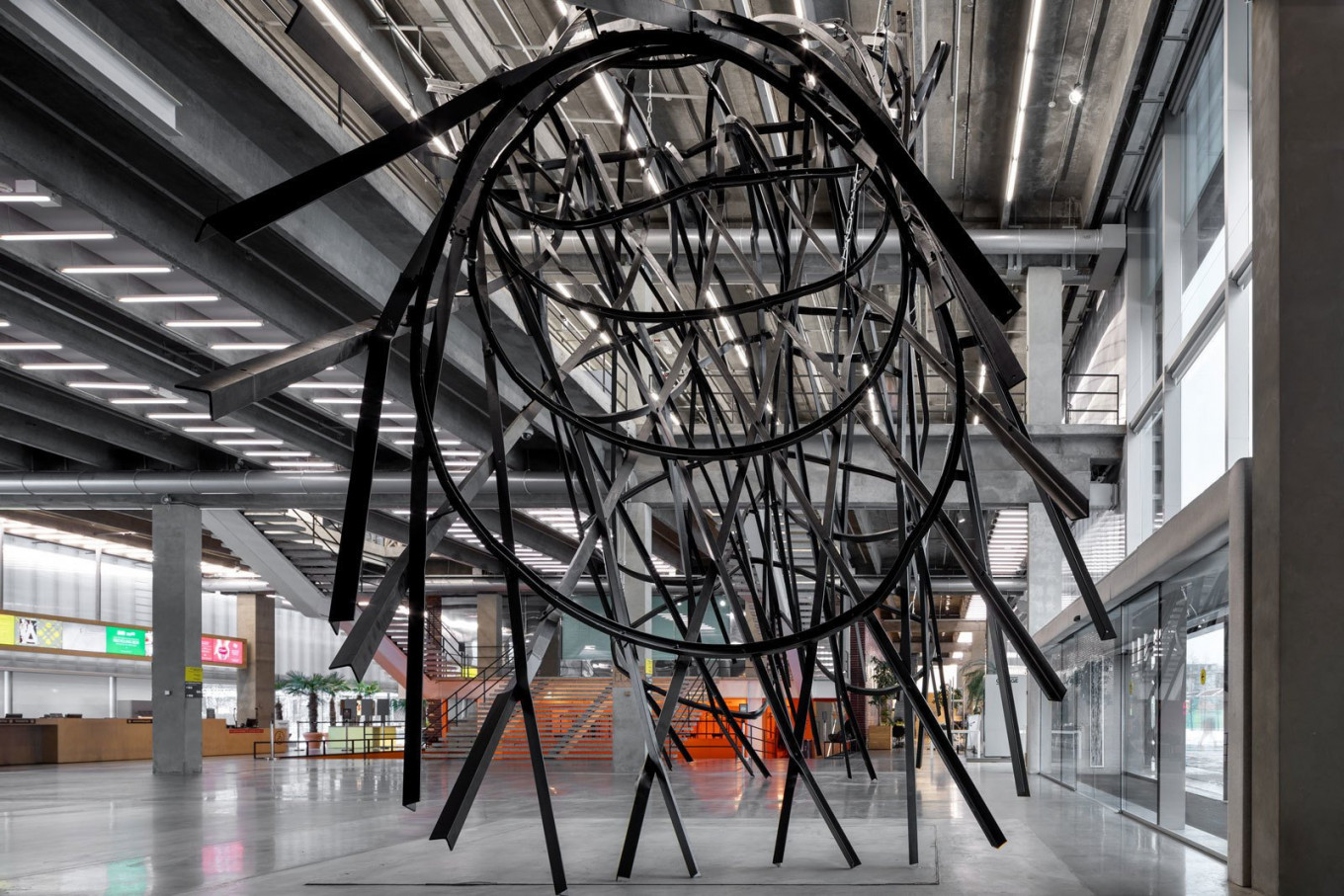
In the New Tretyakov Gallery, a boxy structure designed in the 1960s that is the epitome of Soviet modernist style, there is a small model of Vladimir Tatlin’s “Monument to the Third International.” Designed in 1919-20 but never built, the monument exists only in miniature form. Its double helixes spiral upward above girders and arches as it stands on a pedestal of the gallery, triumphant but tiny, dwarfed by a grand, wide staircase and surrounded by huge windows.
Across the street in Gorky Park, in a Soviet modernist building of the same era — although built originally as a large café, not a picture gallery — is another metal construction. It is also a small version of a Soviet structure built in the 1920s: Vladimir Shukhov’s hyperboloid tower. This tower, although an eighth the size of the original, is enormous, filling the entire space of the atrium of the Garage Museum of Contemporary art, nearly touching the ceiling and wall of windows. But this monument is bent over, hobbled, broken — the opposite of the little model of Tatlin’s monument that eternally soars upward across the street.
The structure, entitled “Exercises in Construction, Bending,” was created by the Polish sculptor and installation artist, Monika Sosnowska. One of four exhibitions launched by the museum in the new year, Sosnowska’s exhibit greets visitors at the entrance to the museum.
Sosnowska has been interested in Soviet modernist architecture for many years. She based her piece on the 160-meter Shukhov Tower, built 1920-22 as a radio tower, which still stands not far from the museum, rising up in what appears to be an airy conical structure that is actually sturdy and impervious to strong winds. Sosnowska built a much smaller structure, but it is still enormous: 20 meters tall and weighing seven tons.
Then she used excavators to bend it in half. After these “exercises in bending,” the tower was dismantled and put back together inside the museum atrium, secured in place and then painted over to conceal the damage during its creation, destruction and re-creation. It fills the space, hunched over, wounded, fallen in on itself — but also newly born, with beautiful new lines to be discovered in what first appears to be a tangle of metal.
It may seem odd to reach for words that describe living beings when describing a mass of metal girders. But the curator of this exhibition, Anastasia Mityushina, does the same, and indeed, finds those words and emotions are very much the point of the work. “They smashed the entire piece with excavators. It was painful to watch. Then they took it apart and put it back together in the atrium. As they rivetted it, the entire piece vibrated, as if it were a living being.”
Mityushina stressed that Sosnowska does not like to answer questions about her works or define them; she wants viewers to discover in them what they will. And so, Mityushina doesn’t insist that her response is the only possible reaction. But visitors look at the piece and wince, as if feeling the pain of bent metal.
This sculpture is “not an homage to the past, but a changing of the past, one of her ‘exercises’ in bending the past,” Mityushina said. “It isn’t a warning or nostalgia…but a space where our senses become sharper and we begin to feel empathy,” she wrote in an introduction to the exhibit.
“By rights, something made by industry should stand and make us safe. But here it is broken and crippled. So the question is: Do we have enough compassion?”
“Exercises in Construction, Bending” will be in the atrium until May 19.
9/32 Ulitsa Krymsky Val. Metro Oktyabrskaya, Park Kultury. garagemca.org/en






